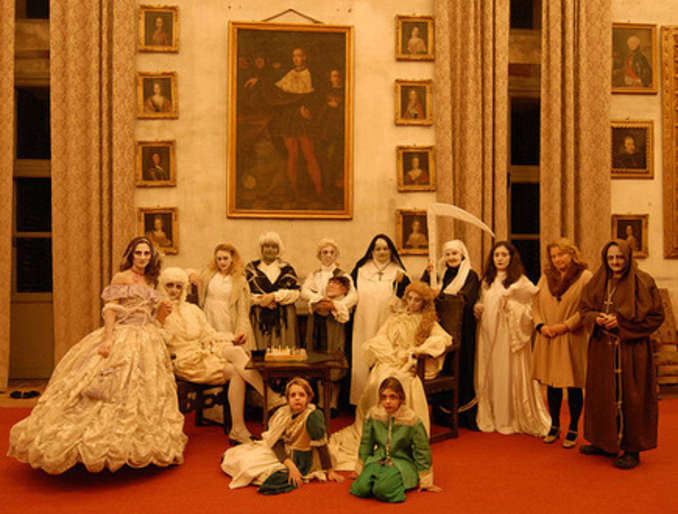
27 October 2017
Castello di Masino
Facing out across the wide plain of the Canavese area, Masino Castle stands on a hill opposite the long morainal barrier of the Serra di Ivrea. The building was erected in the 11th century at the behest of the Valperga family. Its sumptuous interiors, embellished by frescoes and rich furnishings, and its numerous monumental rooms, are testaments to the cultured and refined lifestyle of the proprietors. From the late 16th century onwards, the Castle was rebuilt in its present form on the ruins of the old fortress, taking on the appearance of a showpiece mansion, nestling in extensive and exquisite grounds, which to this day betray the transformations made in the 18th and 19th centuries.
The entire landscaped area is divided into two separate sections facing from east to west in accordance with the morphology of the terrain; a majestic boulevard, flanked by limes, runs westwards from the flat ground, coming to an end in the grassy expanse, where you can visit the Maze, a typically organic element that evokes the so-called ''Italian-style'' gardens of the late 18th century.
The edge of the clearing is the starting point for the unique ''Strada dei ventidue giri'', created between 1840 and 1847 to link the nearby town of Strambino to the Castle, its eponymous twenty-two hairpin bends characterised by a gradual, constant incline that was designed to facilitate the ascent by stagecoaches. In the ''English-style'' eastern section, where the diversified, wild side of nature is very much to the fore, there are generously proportioned lawns at different heights.
The early 19th century saw the construction of a small neo-Gothic temple around which, in spring, 7,000 spiraea come into bloom, embellishing the garden yet further, just as the architect Paolo Peyrone intended. Located on the eastern terrace, between the round tower and the tower of the winds, at the foot of the bastions, the cypress garden retains traces of the geometric and architectural arrangement so typical of what would go on to be referred to as the archetypal ''Italian'' garden.
The entire landscaped area is divided into two separate sections facing from east to west in accordance with the morphology of the terrain; a majestic boulevard, flanked by limes, runs westwards from the flat ground, coming to an end in the grassy expanse, where you can visit the Maze, a typically organic element that evokes the so-called ''Italian-style'' gardens of the late 18th century.
The edge of the clearing is the starting point for the unique ''Strada dei ventidue giri'', created between 1840 and 1847 to link the nearby town of Strambino to the Castle, its eponymous twenty-two hairpin bends characterised by a gradual, constant incline that was designed to facilitate the ascent by stagecoaches. In the ''English-style'' eastern section, where the diversified, wild side of nature is very much to the fore, there are generously proportioned lawns at different heights.
The early 19th century saw the construction of a small neo-Gothic temple around which, in spring, 7,000 spiraea come into bloom, embellishing the garden yet further, just as the architect Paolo Peyrone intended. Located on the eastern terrace, between the round tower and the tower of the winds, at the foot of the bastions, the cypress garden retains traces of the geometric and architectural arrangement so typical of what would go on to be referred to as the archetypal ''Italian'' garden.
Halloween is an opportunity to be really creative.- Judy Gold - |






